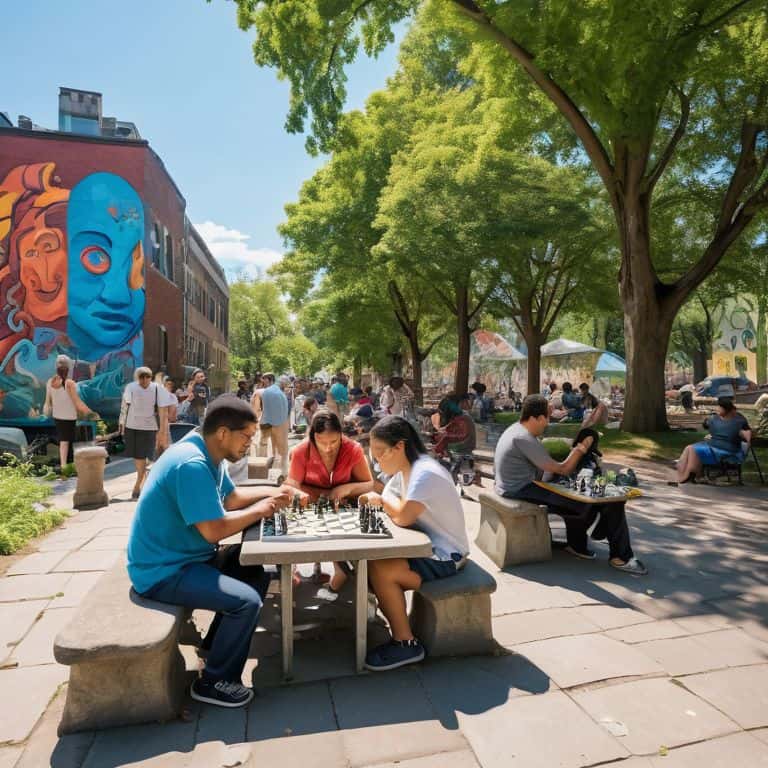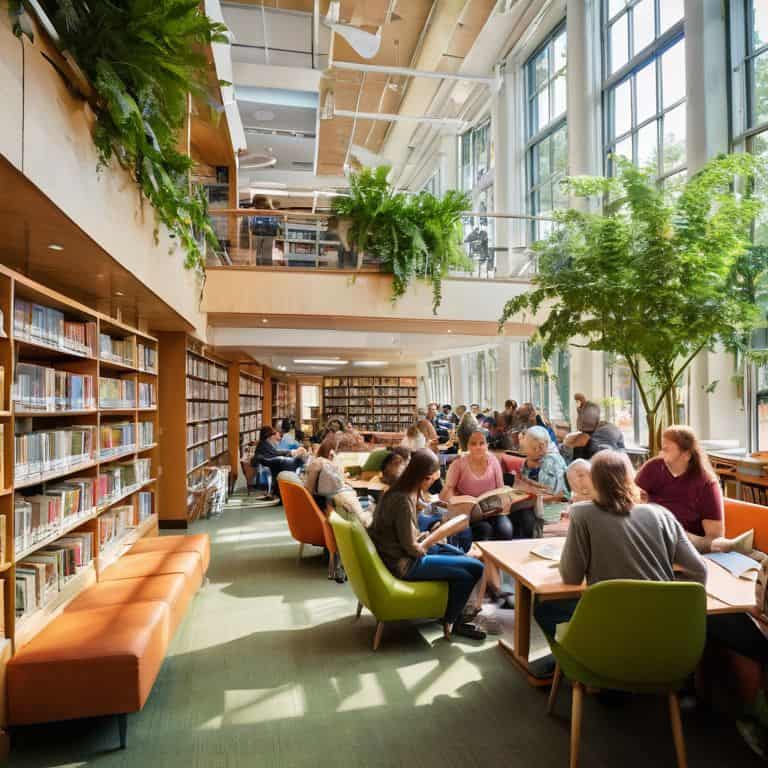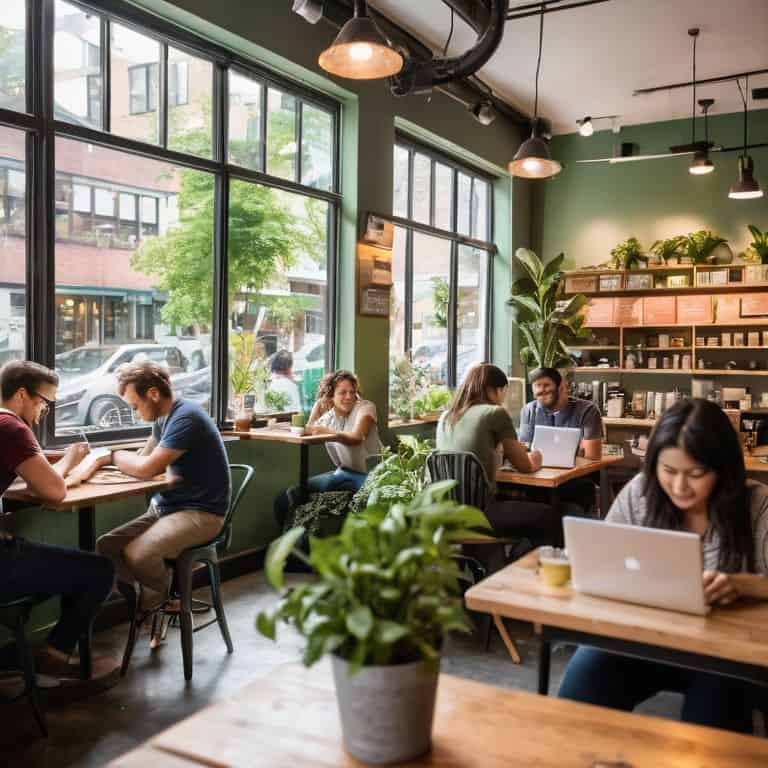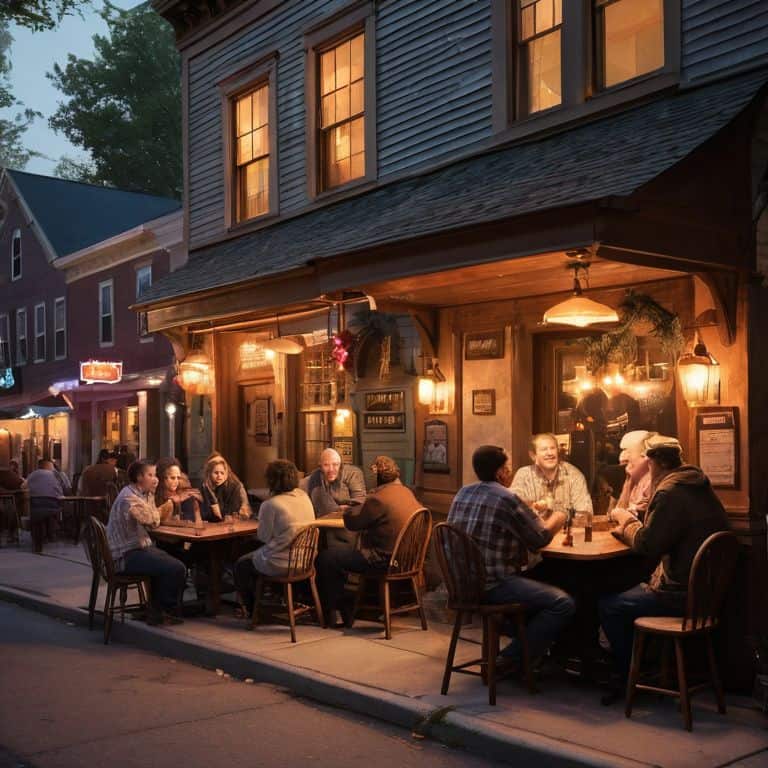As I sit in my favorite coffee shop, surrounded by the gentle hum of conversation and the aroma of freshly brewed coffee, I’m reminded of the importance of third places in our lives. You know, those in-between spots that are neither home nor work, but somehow manage to feel like a warm hug for our souls. I’ve always been fascinated by how these spaces can bring people together, foster a sense of community, and provide a much-needed escape from the chaos of our daily routines. But what really draws me to these places is the way they seem to breathe life into our otherwise mundane lives.
In this article, I promise to take you on a journey to explore the authentic beauty of these third places, beyond the glossy brochures and trendy coffee shop aesthetics. I’ll share my own experiences, from stumbling upon hidden gems in the city to finding solace in the familiar rhythms of my local park. My goal is to offer you a no-nonsense guide to appreciating the importance of these spaces, and how they can enrich our lives in ways that feel genuinely meaningful. By the end of this journey, I hope you’ll join me in embracing the beauty of these in-between spaces, and find inspiration to create your own meaningful experiences in the unlikeliest of places.
Table of Contents
Beyond the Ordinary

As I wander through the city, I find myself drawn to those in-between spaces that seem to pulse with a life of their own. The local park, with its worn-out benches and vibrant street art, is more than just a spot to grab a quick lunch or take a stroll. It’s a community hub, where strangers become acquaintances and friends over a game of chess or a picnic blanket. I’ve noticed that these spaces have a profound impact on our mental wellbeing, providing a much-needed escape from the confines of our homes and offices.
The way we design our public areas can greatly influence the social connections we make. For instance, a well-designed coworking space can foster a sense of belonging among its members, who may otherwise be working in isolation. Similarly, public libraries have evolved into vibrant community hubs, offering a range of activities and events that encourage people to come together and engage with one another.
In my own neighborhood, I’ve seen the impact of urban planning on social connections firsthand. The creation of pedestrian-friendly zones and public plazas has transformed the area into a thriving hub of activity, where people from all walks of life can gather and connect. As someone who’s passionate about designing inclusive public areas, I believe that these spaces have the power to bring us closer together and create a sense of community that’s often lacking in our increasingly digital lives.
Designing Inclusive Public Areas
As I wander through the city, I notice how public spaces can either bring us together or drive us apart. A well-designed park, for instance, can be a hub of community activity, where people from all walks of life come to relax, socialize, and recharge. The presence of benches, walking paths, and ample greenery can foster a sense of belonging and inclusivity.
In designing these areas, it’s essential to consider the needs of diverse users. This might involve incorporating accessible pathways, seating areas, and amenities that cater to different age groups and abilities. By doing so, we can create vibrant community hubs that reflect the unique character of our cities and bring people together in meaningful ways.
Role of Third Spaces in Mental Health
As I reflect on my own experiences, I’ve come to realize that third spaces play a significant role in maintaining our mental well-being. They offer a much-needed escape from the confines of our homes and workplaces, providing a sense of freedom and autonomy.
In these shared environments, we can let our guard down and simply be, without the burdens of responsibility or expectation.
The Importance of Third Places

As I wander through the city, I find myself drawn to those in-between spaces that seem to pulse with a life of their own. The local park, the corner coffee shop, the public library – these are the places where we find community, where we forge connections with others, and where we discover new aspects of ourselves. I’ve come to realize that designing inclusive public areas is not just about creating aesthetically pleasing spaces, but about crafting environments that foster a sense of belonging and social connection.
The impact of urban planning on social connections cannot be overstated. When we design cities with people in mind, we create opportunities for chance encounters, for collaboration, and for mutual support. This, in turn, has a profound effect on our mental wellbeing, as we begin to feel seen, heard, and valued. I’ve seen this play out in the benefits of coworking spaces, where individuals from diverse backgrounds come together to share ideas, resources, and inspiration.
In these third spaces, we find a sense of community engagement, a feeling that we are part of something larger than ourselves. Whether it’s a book club at the public library, a street festival in the park, or a spontaneous conversation with a stranger at a coffee shop, these moments of connection are the threads that weave our lives together. By embracing the beauty of these in-between spaces, we can begin to redefine what it means to live a well-rounded life, one that is rich in experience, connection, and meaning.
Benefits of Coworking Spaces Uncovered
As I step into a coworking space, I’m struck by the vibrant energy that fills the room. It’s a space where strangers become collaborators, and ideas flow freely. The benefits of coworking spaces are multifaceted, from providing a sense of community to fostering innovation.
In these shared offices, I’ve witnessed firsthand the power of collaboration. By bringing together individuals from diverse backgrounds and industries, coworking spaces facilitate the exchange of ideas and expertise, leading to novel solutions and a more dynamic work environment.
Public Libraries as Community Hubs
As I wander through the city, I find myself drawn to the warm glow of public libraries, those bastions of knowledge and community. They’re more than just repositories of books, serving as vibrant hubs where people from all walks of life come together to learn, share, and grow.
In these spaces, I’ve witnessed the power of connection firsthand, as strangers become friends over a shared love of literature or a mutual interest in a particular topic. The libraries’ role in fostering a sense of belonging and social cohesion is truly remarkable, making them an indispensable part of our urban fabric.
Weaving Life's Tapestry: 5 Key Tips to Unlock the Power of Third Places
- Embrace the Beauty of Impermanence: Allow yourself to get lost in the ever-changing landscapes of third places, from the street art that pops up overnight to the seasonal menus at your favorite café
- Cultivate Curiosity: Treat each new encounter in a third place as an opportunity to learn someone’s story, to discover a hidden passion or a quirky habit that makes their life richer
- Design for Serendipity: Whether you’re a urban planner, a business owner, or simply a community member, think about how you can create spaces that encourage chance meetings and unexpected collaborations
- Find Solace in the In-Between: Recognize that third places are not just physical spaces, but also emotional sanctuaries where we can escape the pressures of our personal and professional lives
- Collect Stories, Not Just Memories: As you navigate the third places in your life, collect the stories, the anecdotes, and the legends that make each spot unique, and use them to weave a richer narrative about your community and your place within it
Embracing the Beauty of Third Places: Key Takeaways
I’ve come to realize that third places, like cozy coffee shops or vibrant community gardens, are more than just physical spaces – they’re the emotional anchors that give our lives depth and meaning, allowing us to connect with others and find our own sense of belonging
By embracing the imperfections and quirks of these in-between spaces, we can unlock their full potential to foster creativity, support mental well-being, and build stronger, more resilient communities that thrive on diversity and inclusivity
Ultimately, the beauty of third places lies not in their grand designs or polished appearances, but in the authentic, everyday moments they facilitate – from chance encounters with strangers to intimate conversations with old friends – reminding us that a well-lived life is one that celebrates the messy, beautiful chaos of human connection
Embracing the In-Between
Third places are the invisible stitches that weave our lives together, reminding us that community, connection, and a sense of belonging are not just found in grand, monumental spaces, but in the small, imperfect, and often overlooked corners of our daily routines.
Maya Sterling
Embracing the Beauty of Third Places

As I reflect on the importance of third places, I’m reminded of the interconnectedness of our lives. From the corner coffee shop to the local park, these in-between spaces have a profound impact on our mental health, social connections, and sense of community. By designing inclusive public areas and embracing the role of third spaces in our well-being, we can reimagine what it means to live a fulfilling life. Whether it’s the bustle of a coworking space or the quiet of a public library, third places offer a unique opportunity for connection and growth.
So, let’s venture out and uncover the magic in these mundane spaces. Let’s celebrate the beauty of imperfection and find meaning in the everyday moments that make life worth living. As we navigate the complexities of modern life, may we always remember the power of third places to bring us together, to inspire us, and to remind us of the beauty that lies just beyond the ordinary.
Frequently Asked Questions
How can we balance the need for public third places with the rise of remote work and increasingly private lives?
To me, it’s about creating intentional, hybrid spaces that blend public and private realms – think coworking cafes or community-driven online forums that foster connection and collaboration, allowing us to strike a balance between our desire for solitude and our need for meaningful interactions.
What role can technology play in enhancing or hindering the experience of third places?
As I snap photos of street art on my phone, I ponder how technology can both unite and isolate us in third places – it’s a delicate balance between connection and distraction, don’t you think?
In what ways can the design of third places, such as parks or coffee shops, influence the types of social interactions that occur there?
You see, the design of these third places can be a powerful catalyst for connection – think of a park bench inviting strangers to sit together, or a coffee shop’s cozy nooks fostering intimate conversations. By intentionally crafting these spaces, we can nurture a sense of community and spark meaningful interactions among people from all walks of life.
